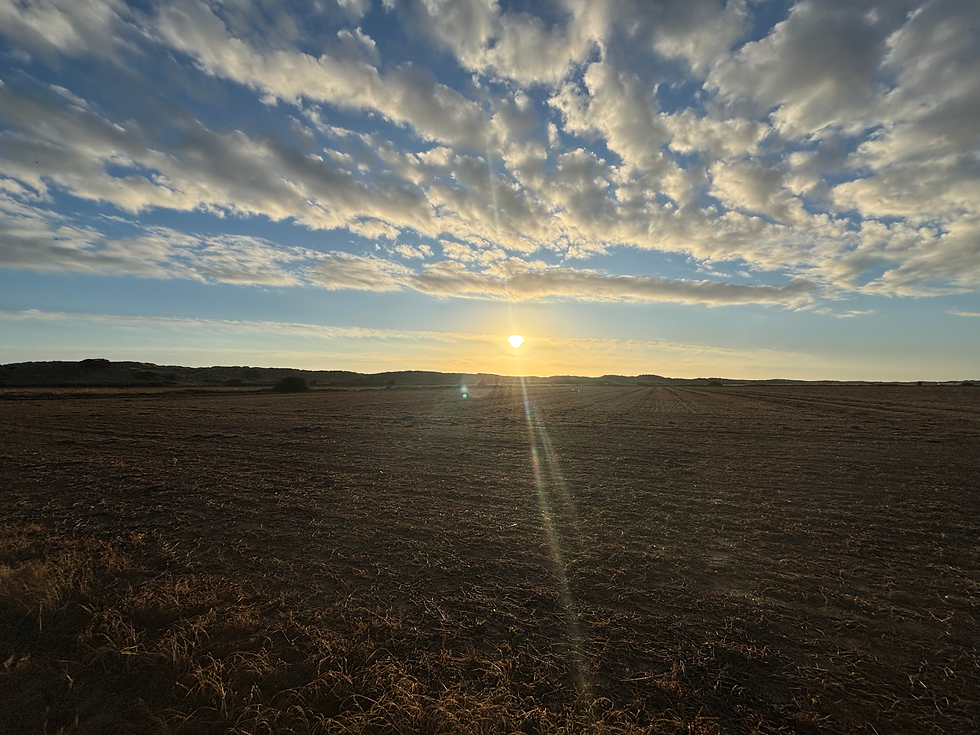Long-tailed Skua, Sep 5
- tg42lowcarbonbirding
- Sep 24, 2024
- 2 min read

Long-tailed Skua, juvenile, intermediate type, Sea Palling, Sep 5, T. E. Allwood
Just after I left school at around 3:10 pm, Andy Kane put a message on our WhatsApp that the passage on the sea was now getting more interesting and several Manx had already passed, along with a few skuas etc. As soon as I got home, I changed into my shorts and got on the bike to cycle the short distance to one of my seawatch locations. There were many Kittiwakes and several groups of Manx passing; the Manx in particular giving better than usual views. A few Arctic Skuas were also passing, mostly adults but a few juveniles were noted too.
Around 17:15 I picked up a small loose group of skuas heading south not far beyond the reefs (500m or so), one of which looked a little lightweight, was gliding a fair amount, and was showing very little white in the outerwing other than a thin line near the outer edge. As it moved through, a better view of the upperparts showed them to be a rather cold grey-brown, as opposed to the much warmer tones of an Arctic Skua. They also appeared quite messy due to the fringing on the feathers. The cold grey-toned upperwing and mantle contrasted sharply with the very dark primaries. The underwing was hard to see but was pale compared to the upperwing and there was a white patch under the primary coverts.

The rear of the bird was striking; a very clearly black-and-white barred patch on the uppertail giving way to a black, diamond-shaped tail that appeared “stuck on”. The front end was a little trickier to see but there was a darker breastband and a paler area below it with dark flank barring visible on the off-white / buffy flanks. As the birds passed, the Long-tailed broke off from the others and dropped onto the sea, revealing a dingy yellow head with a “dark cap” effect visible.
This individual was about as textbook a Long-tailed Skua as you can get. As well as the structure and flight, the cold greyish-brown upperpart tone and fringing, clearly barred uppertail, black diamond-shaped skinny stuck-on tail, the dingy breastband, yellowy head and darker cap, paler belly, restricted white in the outer primaries and a decent white flash on the pale underwing made for a superb example of the species. This was my second Long-tailed Skua in the space of a few days and being a rare bird that we don’t see many of, it was very enjoyable to see one so well.





Comments